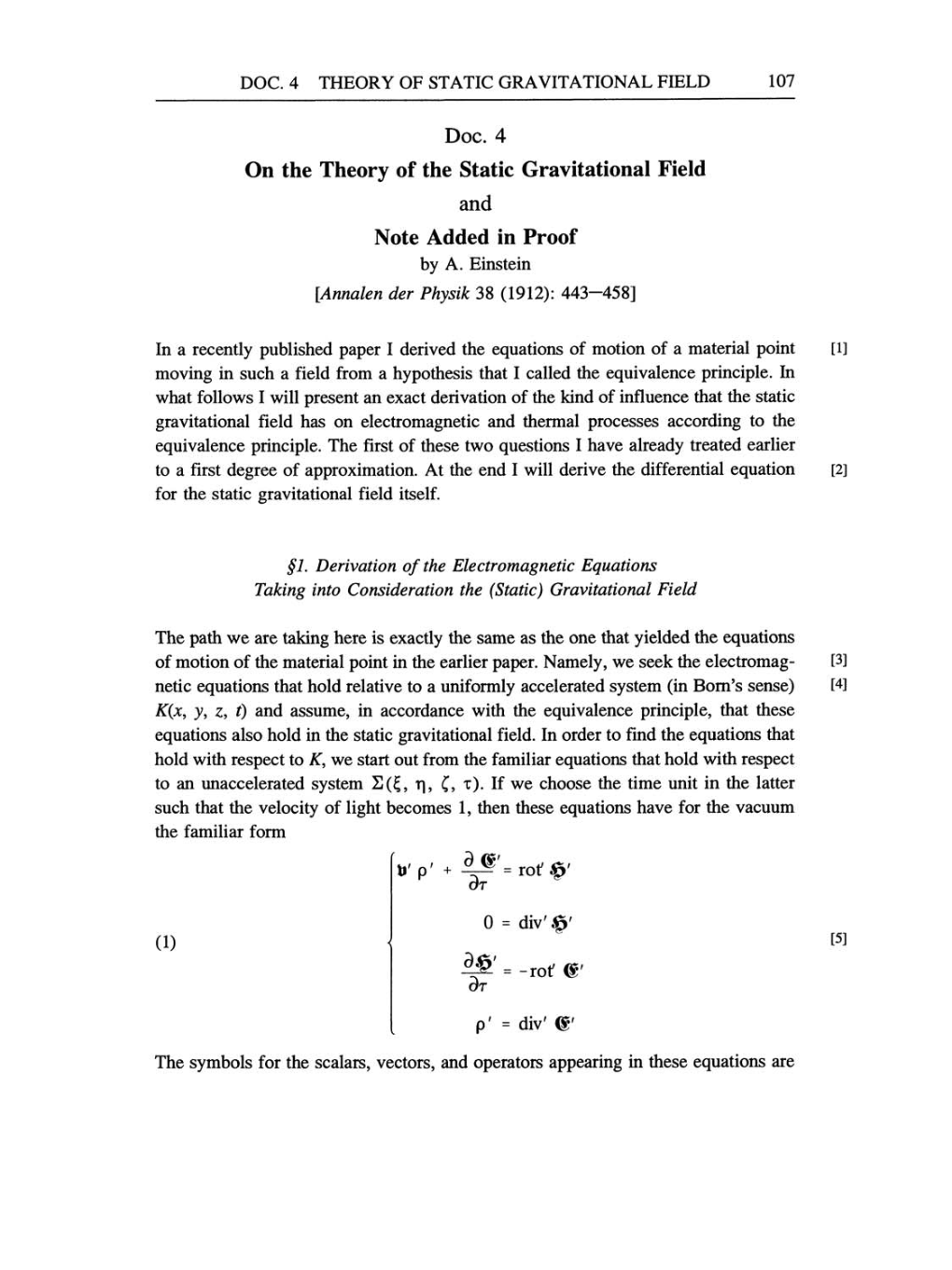DOC.
4
THEORY OF STATIC GRAVITATIONAL
FIELD
107
Doc.
4
On the
Theory
of the Static Gravitational
Field
and
Note
Added
in
Proof
by
A.
Einstein
[Annalen
der
Physik
38
(1912):
443-458]
In
a
recently published paper I
derived the
equations
of motion
of
a
material
point
[1]
moving
in such
a
field from
a
hypothesis
that I called
the
equivalence principle.
In
what follows
I
will
present an
exact
derivation
of
the kind of influence that the static
gravitational
field has
on
electromagnetic
and thermal
processes according
to
the
equivalence principle.
The first
of
these
two
questions
I
have
already
treated earlier
to
a
first
degree
of
approximation.
At
the end
I
will derive the differential
equation
[2]
for the static
gravitational
field itself.
§1.
Derivation
of the
Electromagnetic
Equations
Taking
into Consideration
the
(Static)
Gravitational Field
The
path
we are
taking
here is
exactly
the
same as
the
one
that
yielded
the
equations
of motion
of
the material
point
in
the earlier
paper.
Namely,
we
seek the
electromag-
netic
equations
that hold relative
to
a
uniformly
accelerated
system
(in
Born's
sense)
[4]
K(x, y,
z,
t)
and
assume,
in accordance with the
equivalence principle,
that these
equations
also hold in the static
gravitational
field. In order to find the
equations
that
hold with
respect
to
K, we
start
out
from the familiar
equations
that hold with
respect
to
an
unaccelerated
system
E(£, n,
C,
T).
If
we
choose the time unit in the latter
such that the
velocity
of
light
becomes
1,
then these
equations
have for the
vacuum
the familiar form
[3]
(1)
rot'
0
=
div'
=
-rot'
@
[5]
p'
=
div'
e
The
symbols
for the
scalars, vectors,
and
operators appearing
in these
equations
are
